Dream within a Dream! Are you familiar with this concept? Yes, this is from the movie Inception. The same can be said for Hyper-V, where a Virtual Machine is inside your Windows 11.
Enabling the Hyper-V platform, you can test other OS from your system, allowing you to thrive at your productivity. But the feature is only available on Windows 11 Pro and Enterprise.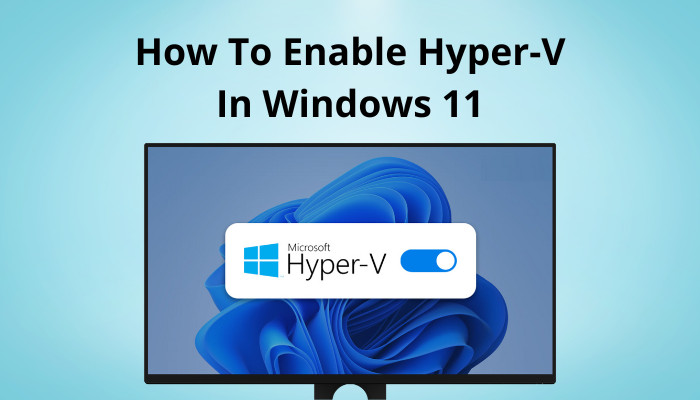
Therefore, this article contains enough information to enable Hyper-V on your system. And Don’t lose heart if you are a Windows 11 Home user. I will also give a workaround for you here.
Let’s dive!
Check our latest post: can’t Boot Windows 11 after enabling Hyper-V.
How to Enable Hyper-V on Windows 11
Hyper-V function is quickly accessible in Windows 11 Pro, Enterprise and Work or school versions. But first, you must meet the feature requirement, and when the function is disabled, you have to enable it from BIOS. Then install the Hyper-V on Windows.
All the procedures for enabling Hyper-V are stated below for easy understanding.
Here are the steps to enable Hyper-V on your Windows 11 Pro or Enterprise:
1. Check the Requirement
Check whether your system’s Virtualization function is enabled or not. If it’s already activated, you can skip this heading and move to the 3rd portion to install Hyper-V on your Windows 11. But for now, let’s see the checking process.
Here are the ways to check whether virtualization is enabled:
- Press the Ctrl+Shift+Esc keys and open Task Manager.
- Move to the Performance tab.
- Check the Virtualization option from the CPU section.
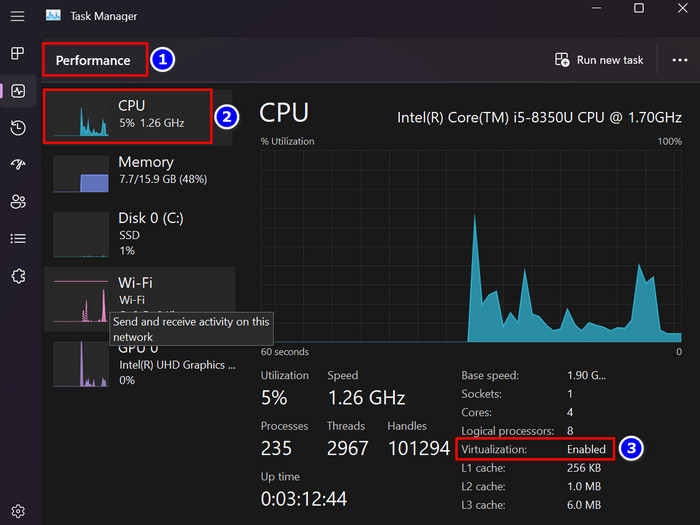
If the Virtualization is disabled, you must enable the function from BIOS before installing the Hyper-V. You can do that by following instructions from the next segment.
2. Enable Virtualization from BIOS
When you enable virtualization, it will allow you to use the Hyper-V feature on your system. The process is also very straightforward and displayed below.
Here is the procedure for enabling the Virtualization from BIOS:
- Hold the Windows+I buttons together to launch Windows Settings.
- Select the Recovery option from the System section.
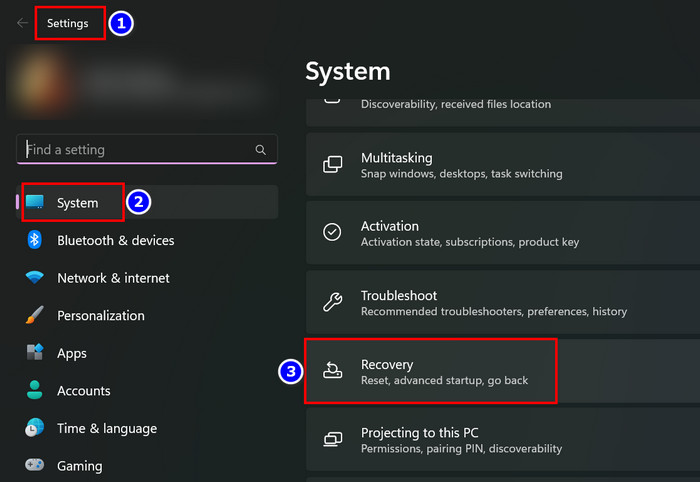
- Click on the Restart now button from Advanced startup.
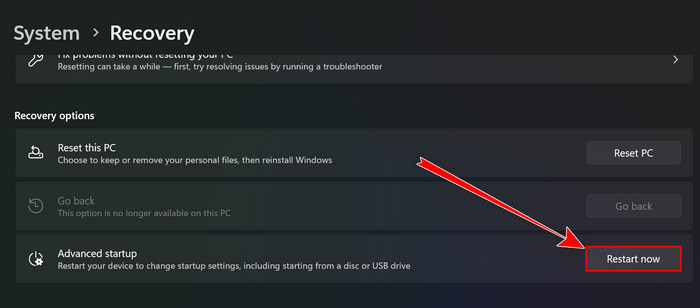
- Pick the Troubleshoot option from the Choose an option window.
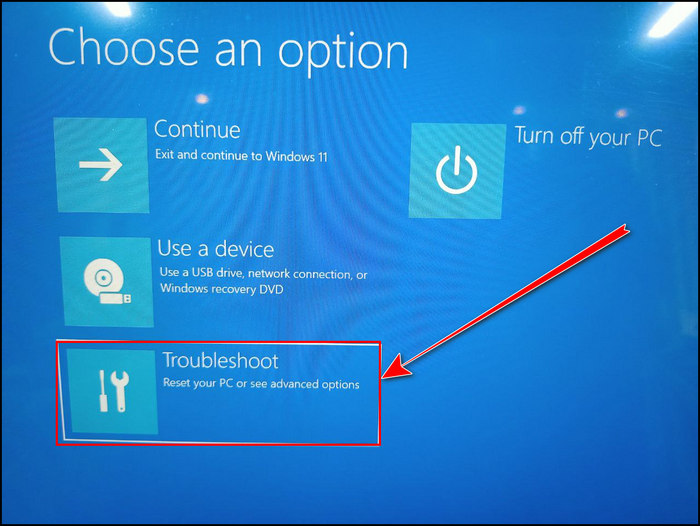
- Select the Advanced options.
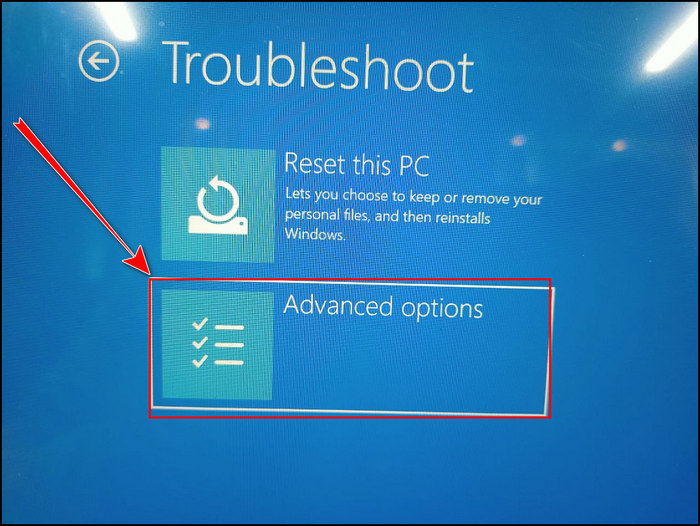
- Choose the UEFI Firmware Settings option.
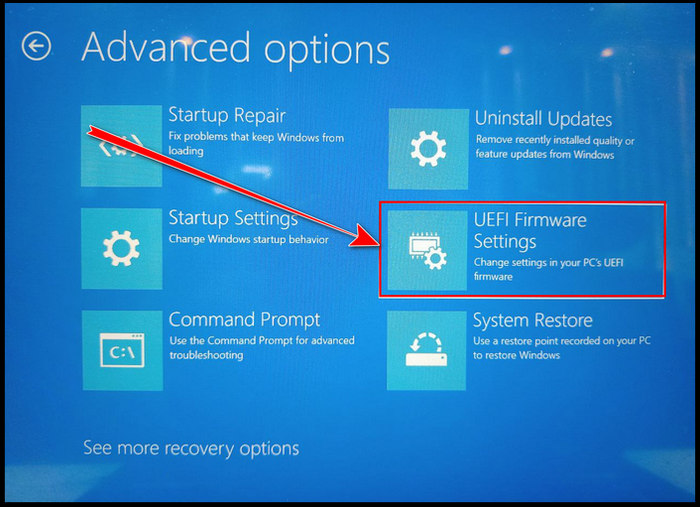
- Hit the Restart button.
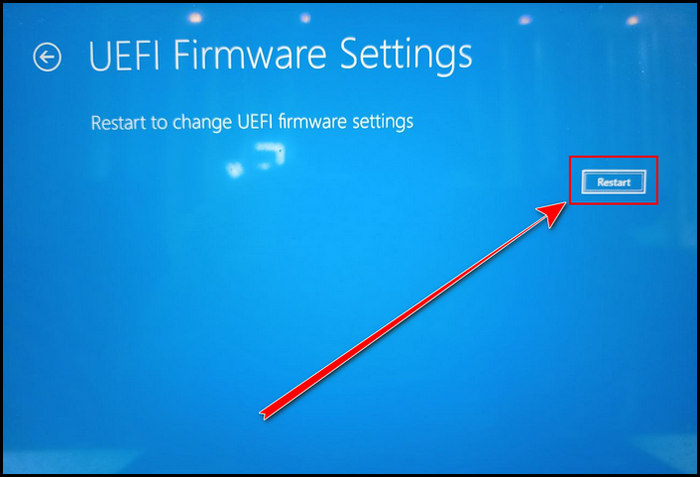
- Open the Virtualization Support or Virtualization Technology section from the Advanced, Security or Configuration tab. The location of the Virtualization function can vary depending on your device manufacturer.
- Enable the Virtualization function.
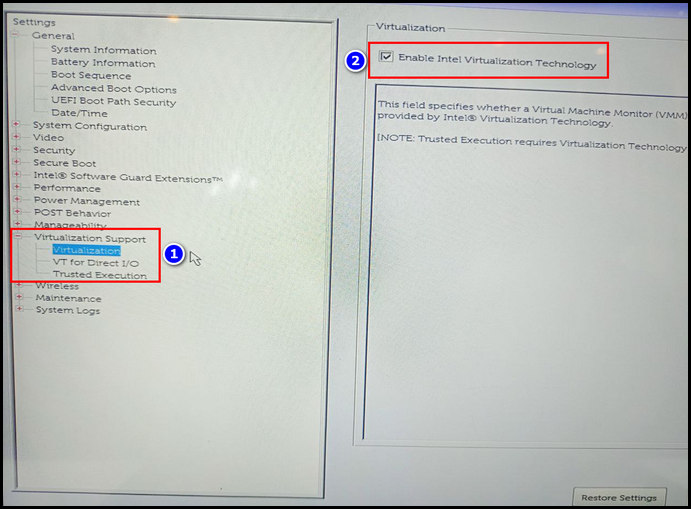
- Save the changes.
Now your system supports virtualization, and you can effortlessly enable the Hyper-V on your device. Read the following segment to accomplish that.
Also, check our latest post: enable go back button in Windows 11.
3. Install Hyper-V on Your Windows 11
After checking your system status and enabling Virtualization, now is the time to enable Hyper-V on your Windows 11 Pro or Enterprise.
You can follow 3 individual methods to complete the task; for your aid, I demonstrate them here. Just follow the one that seems convenient to you.
Here are the methods to enable Hyper-V on your Windows 11:
Use Windows Settings
- Press Win+I to open the Settings on your Windows 11.
- Navigate to the Apps section from the left navigation panel.
- Select Optional features.
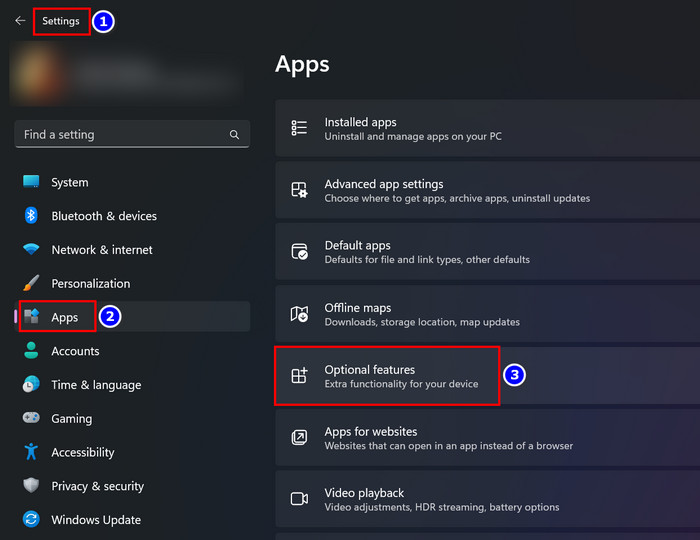
- Scroll down and choose More Windows features.
- Check the Hyper-V folder from the Turn Windows features on or off window.
- Press the OK button.
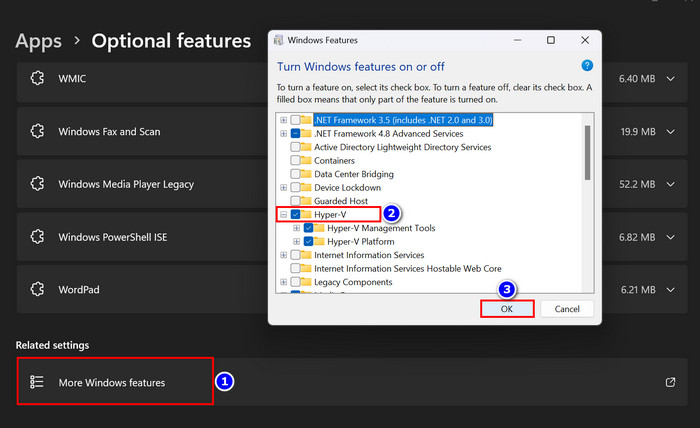
- Hit the Restart now option.
- Move to the Search bar after rebooting.
- Type Hyper-V Manager and select it. Now you can use Hyper-V on your Windows system.
Apply Powershell
- Select the Search box and type powershell.
- Right-click on the Windows PowerShell.
- Choose the Run as administrator option.
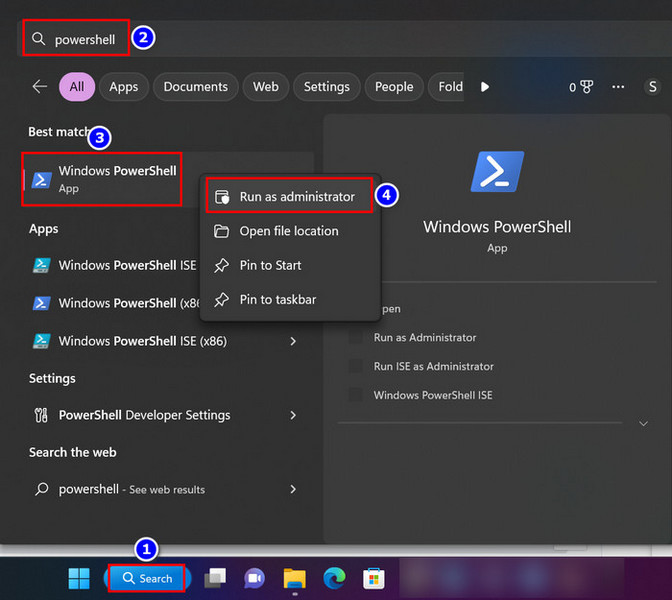
- Copy & paste the following command:
- DISM /Online /Enable-Feature /All /FeatureName:Microsoft-Hyper-V
- Press Y to restart your device for the Hyper-V installation.
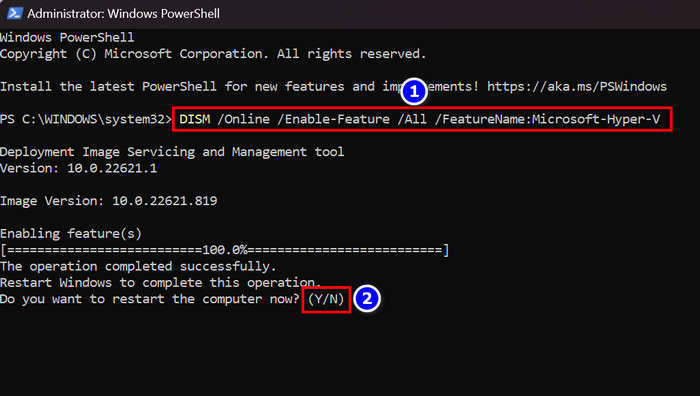
- Search for Hyper-V Manager and use the feature.
Also read, schedule Windows 11 to wake from sleep automatically.
Use Command Prompt
- Press the Windows logo key and open the Search bar.
- Type cmd and right-click on the Command Prompt.
- Choose the Run as administrator option.
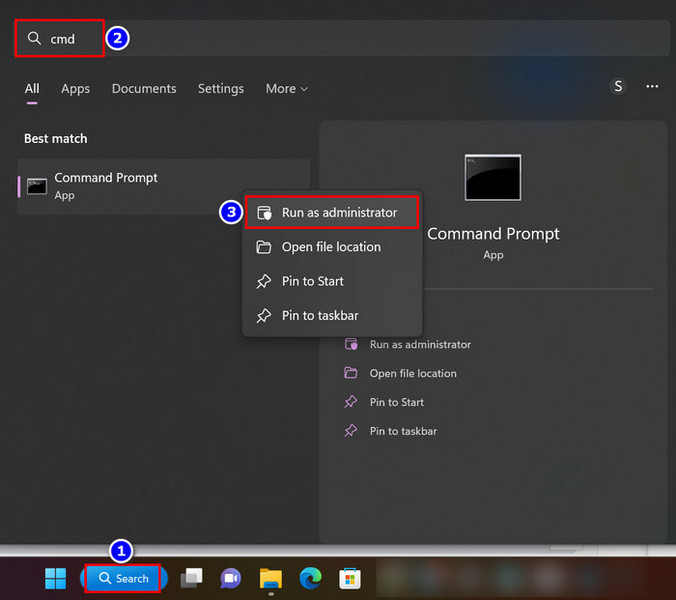
- Type the following command into the prompt window.
- DISM /Online /Enable-Feature /All /FeatureName:Microsoft-Hyper-V
- Press the Y button to complete the enabling process.
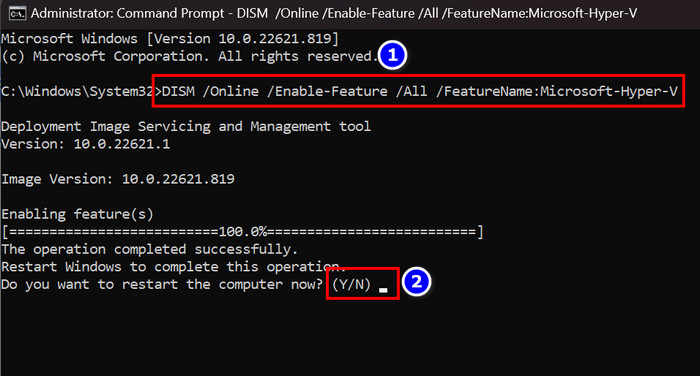
Now you know how you can enable Hyper-V using 3 magnificent techniques. Once you enable the feature, you can utilize it according to your requirement.
The Disabling process of the Hyper-V function is also very easy. Read the following instructions to do that.
- Launch Windows PowerShell with Administrative privileges.
- Copy and paste the command:
- DISM /Online /Disable-Feature:Microsoft-Hyper-V
- Press the Y key to complete the disabling process of Hyper-V.
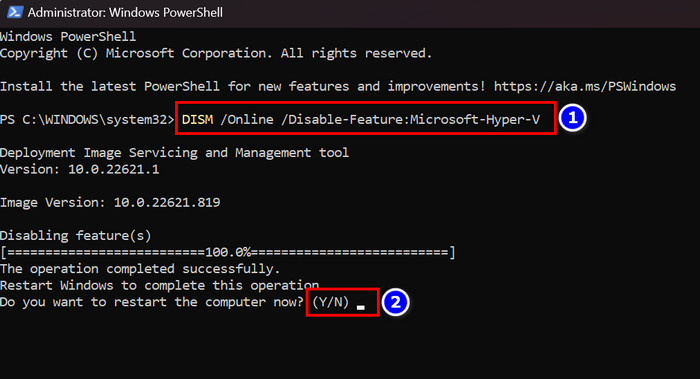
If you are a Windows 11 Home user, then reading the next heading will benefit you.
How to Enable Virtualization on Windows 11 Home
By default, Windows 11 Home does not support Hyper-V. But you can use this amazing feature on your Home edition by enabling Virtualization from the BIOS and creating a .bat file on your system. Remember, the process is manual. That’s why It is best to back up your system for safety.
Here is the process to enable Hyper Virtualization on your Windows 11 Home:
- Press the Win+I keys to launch Settings.
- Choose Recovery from the System tab.

- Hit the Restart now option from Advanced startup.

- Select Troubleshoot from Choose an option.

- Pick Advanced options.

- Click on UEFI Firmware Settings.

- Press Restart.
- Expand Virtualization Support or Virtualization Technology from the Advanced, Security or Configuration section. The function will vary from manufacturer to manufacturer.
- Activate the Virtualization feature.

- Save the modification.
- Open Search and select the Notepad app.
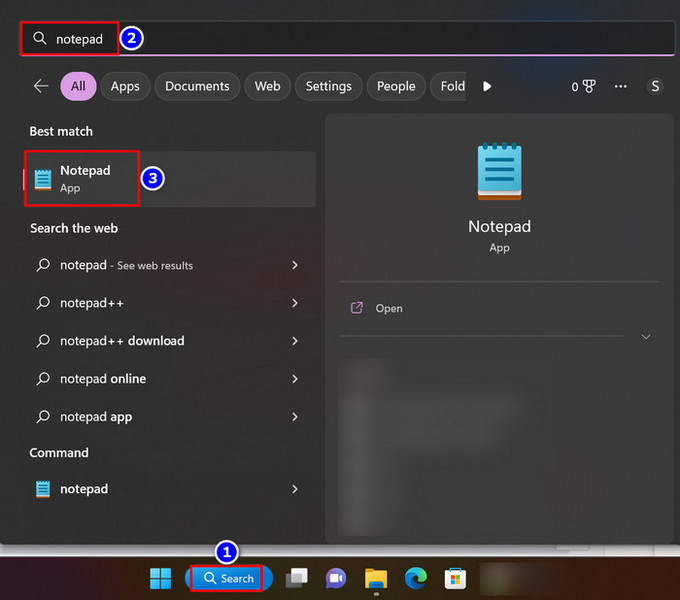
- Copy the following code into it:
- pushd “%~dp0”
- dir /b %SystemRoot%\servicing\Packages\*Hyper-V*.mum >hv-home.txt
- for /f %%i in (‘findstr /i . hv-home.txt 2^>nul’) do dism /online /norestart /add-package:”%SystemRoot%\servicing\Packages\%%i”
- del hv-home.txt
- Dism /online /enable-feature /featurename:Microsoft-Hyper-V -All /LimitAccess /ALL
- pause
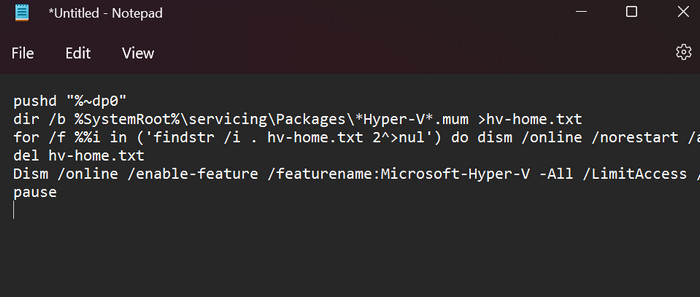
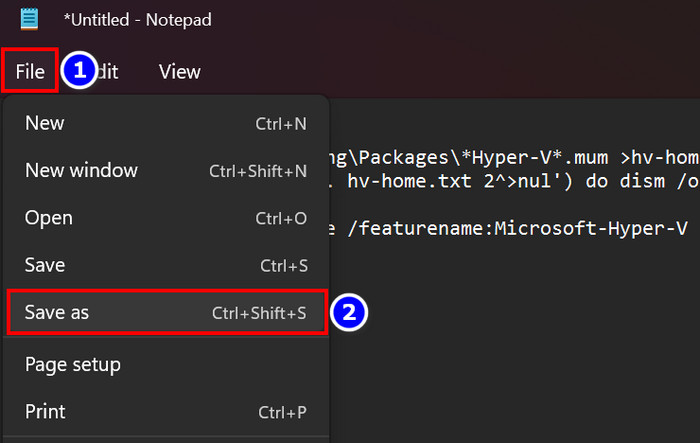
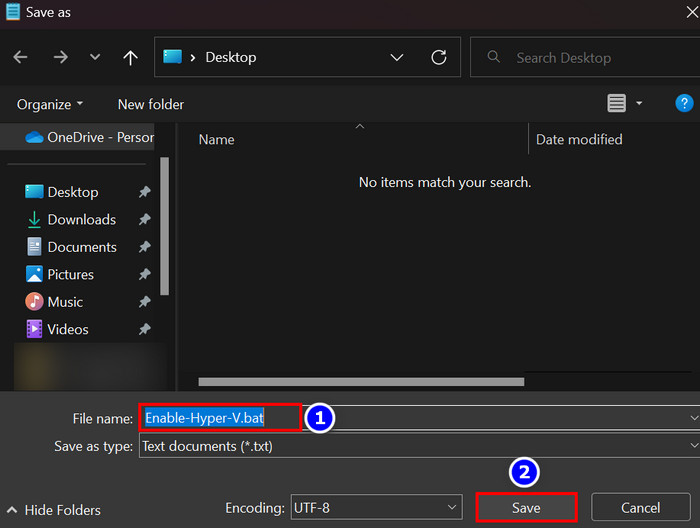
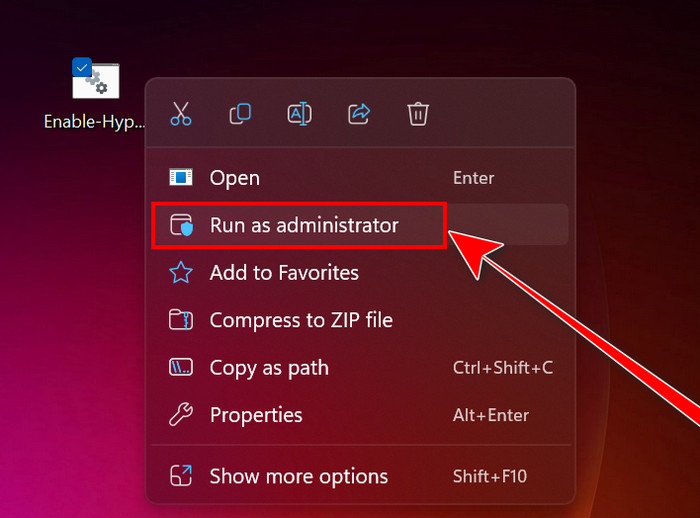
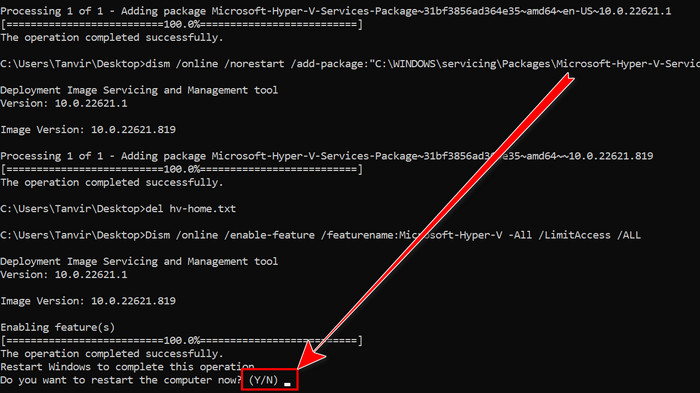
That is how you Enable Hyper-V on your Windows 11 Home. Interesting questions about this topic are staffed in my FAQ section; don’t miss out on that.
Also read, how to fix update error code 0x80004005 in Windows 11.
FAQs
Why is Hyper-V not in Windows 11 features?
The Hyper-V feature is not in Windows 11 by default because the function may seem tricky for normal users. But if you are interested in that feature, you can enable it via Control Panel, Command Prompt or PowerShell.
Does Windows 11 support Hyper-V?
Yes, Windows 11 supports Hyper-V. However, the feature remains disabled by default. To activate it, you must enable the Virtualization function from BIOS, then move to Settings > Apps > Optional features > More Windows features > Check Hyper-V > OK.
How do I enable the Hyper-V feature in Windows 11?
Follow the steps to enable Hyper-V on your Windows 11 system:
- Hold Win+I to open Windows Settings.
- Navigate to the Apps section.
- Select Optional features.
- Scroll down and click on More Windows features.
- Enable the Hyper-V checkbox.
- Press OK and perform a restart to complete the process.
Final Thoughts
If you are a tech geek and want to experience multiple operating systems on your Windows 11, then Hyper-V is the feature you are looking for.
The process of enabling this function is well demonstrated in this content. You just need to read it thoroughly and apply the methods to your system to finish the task.
Let me know in the comment which one you use among Settings, Command Prompt and PowerShell to enable the function.
